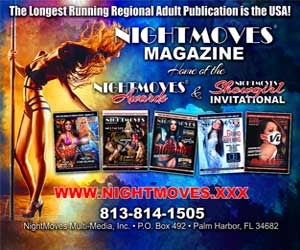WHAT IS THE DIFFERENCE BETWEEN BOURBON & SCOTCH?
Ok, ok … I’m totally confused! What is the difference between Bourbon and Scotch? I know both are alcoholic beverages and both are classified as whiskey … what?? … wait a minute … is it spelled whiskey or whisky? … they can’t even get that figured out! Let’s see if we can answer a few of these questions!
There are many delicious types of whiskey, or whisky, but Bourbon and Scotch are two of the most loved and well known varieties. Both are associated with their places of origin but that’s where the similarities stop. Here are the key differences between the two spirits:
Whiskey (with the e) is the spelling used for American and Irish spirits while the rest of the world (Europe, Australia, Japan and even Scotland) drop the e. All whiskey/whisky must be distilled at a minimum of 40 percent and a maximum of 94.8 percent alcohol by volume.
The U.S. Government has very strict regulations for Bourbon, one of which is that Bourbon whiskey must be made from a grain mixture of at least 51 percent corn. The rest is usually a mix of malted barley, rye and wheat. Scotch whisky, on the other hand must be made from malted barley which is Scotch’s primary ingredient, along with water and yeast. Scotch producers are permitted to include other whole cereal grain for coloring.
The two liquors have different (but similar) tastes. While both can have a smoky, charred taste, Scotch and Bourbon develop these traits through different means. Bourbon draws its oaky, vanilla-like flavors from the charred surface of the barrels in which it ages, whereas Scotch’s smoke comes largely from peat burned in the barley malting process. Keep in mind though that not all scotches have a “peaty” flavor. In fact, only two of the five Scotch producing regions are known for that signature peatiness.
There are five basic types of Scotch and the spirit dates back to 1495 when it was first distilled by a friar named John Cor at the Lindores Abbey. The Scotch barrels (also called casks) cannot exceed 700 liters and must be enclosed for a minimum of three years. Scotch must be aged for no less than three years. Within Scotch, though, there are other distinctions as well. For instance, a single malt Scotch is made with malted barley in pot stills at a single distillery and blended Scotch whisky is made by combining several single malts with other whiskies in column stills. Scotch also tends to be aged longer than Bourbon, with many of the most popular whiskies hitting shelves after anywhere from 12-25 years inside barrels! Blended Scotch make up 90% of all whisky produced in Scotland. A few popular brands include: Ballantines, Bells, Chivas Regal, Cutty Sark, Dewars, J&B and Johnnie Walker.
Contrary to popular belief, Bourbon can be made outside of Kentucky (Jack Daniels is distilled in Tennessee but uses a charcoal filtration system and is called Tennessee Whiskey not a pure Bourbon). However, to legally qualify as Bourbon, it must be made in the United States. Similarly, in order for a whisky to be called Scotch, it must be made in Scotland. What??? How damn confusing!
Bourbon must be distilled to no more than 80 percent alcohol (160 proof) and be no more than 62.5 percent when put into casks for aging in new charred oak barrels. Scotch, however, must have an ABV of less than 94.8 percent and is aged in used oak barrels, including those that previously stored other spirits including Sherry, Beer and yes, even Bourbon!
Bourbon has been distilled since the 18th century with American roots tracing to 1820. The origin is not well documented but most often attributed to Elijah Craig who was a Baptist minister and distiller in Kentucky or Jacob Spears who also lived in the Blue Grass State. Bourbon must be made from 51% corn with the rest of the ingredients consisting of rye, wheat, malted barley and water. The Bourbon industry in America is huge with $2.7-Billion in domestic sales and another $1.1-Billion in exported booze! Bourbon has no minimum aging period, but to call your product “Straight Bourbon”, a specific distinction of quality, it must be aged for no less than two years and have no added coloring, flavor or spirits. A few popular brands include: Evan Williams, Woodford Reserve, Jim Beam, 4 Roses, Knob Creek, Wild Turkey, Makers Mark and Old Granddad!
Well, I don’t know if I helped tell you the difference between Bourbon and Scotch or just confused you but whatever the answer is … bottoms up and enjoy!
Information for this blog came from an article published on FoodandWine.com, Wikipedia, Whiskey Regions, The Kentucky Encyclopedia and multiple distilling companies websites.





















No comments